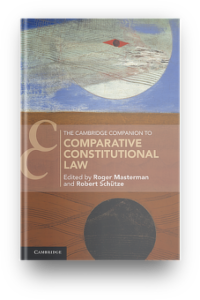‘In law context is everything.’ So said Lord Steyn in the case of R (Daly) v . Secretary of State for the Home Department . 1 In doing so, he was perhaps making a statement of the blindingly obvious, but that does not undermine either the veracity or the broad pertinence of the observation. Indeed, it is an insight onto which the comparative lawyer in particular, and perhaps the comparative constitutional lawyer even more especially, must fasten. One of the great virtues of comparative study is its capacity to illuminate one’s comprehension of a given legal phenomenon or system through an appreciation of how and why things are done differently elsewhere. Understanding why such differences arise can illuminate one’s ‘home’ jurisdiction in fresh ways, subtly, or even radically, changing one’s perspective, and opening up new avenues of inquiry. This can be particularly instructive when the jurisdictions under consideration are, in general, relatively similar – for in such circumstances, individual points of contrast are not readily dismissible as functions of macro- divergence. It is for this reason that comparative scholarship that examines different members of a jurisdictional family, such as the common law systems that form the focus of this book, can be so fruitful.
Against that background, and with Lord Steyn’s aphorism fi rmly in mind, the purpose of this chapter is to examine the constitution of the United Kingdom in a way that identifi es elements of it that form essential components of the context to which the comparativist must be appropriately sensitive. In doing so, two types of constitutional phenomena are considered. The fi rst comprises classical aspects of the UK constitution which, taken in combination, produce a tableau that conforms to the expectations that those with a passing knowledge of the system might be likely to entertain. But therein lies the trap for the incautious comparativist, for a second set of phenomena – which challenge traditional understandings and complicate the comparativist enterprise as it pertains to the UK constitution – must also be considered if our understanding of the context is to be satisfactory. It is only when these two sets of phenomena are taken together that a suitably binocular view of the UK constitution comes into focus. The picture that emerges is of a constitution which, its deep historical roots notwithstanding, is in a state of considerable fl ux – a state of affairs that poses a challenge for anyone seeking to make sense of the UK constitution today, and perhaps particularly for the comparativist who seeks to identify the essence of the ‘British approach’ when it comes to matters constitutional. Understanding the UK constitution, as we will see, thus depends upon an appreciation of the sometimes subtle, and occasionally bewildering, interaction of the old and the new.
